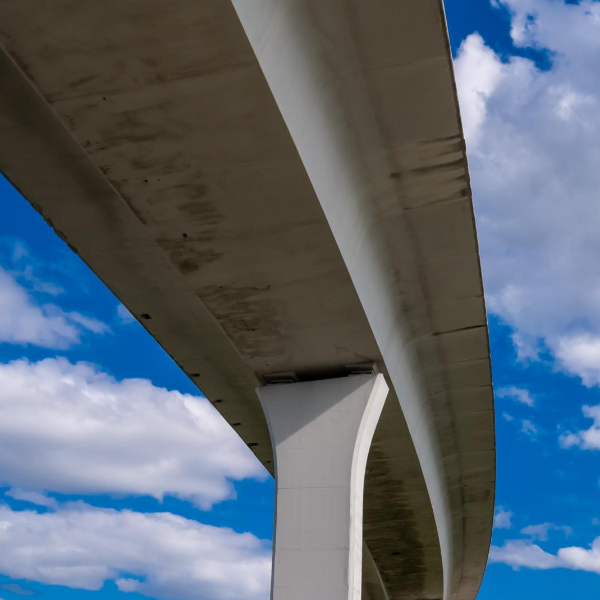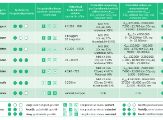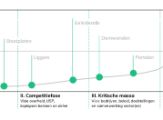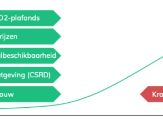Recycling assets: how to approach it

Recycling assets: how to approach it
By 2030, Rijkswaterstaat (RWS) aims to be fully climate-neutral, reduce its use of primary raw materials and work in a circular way to cut its CO2 emissions. As one of the largest asset managers in the Netherlands, RWS can make a significant contribution to national emission reduction targets. To this end, the organisation has drawn up the Climate-Neutral and Circular Infrastructure Strategy, in which high-quality recycling is considered one of the options. Copper8 and Witteveen+Bos, together with RWS, have investigated the opportunities, implications and preconditions of committing to high-quality recycling.
The assets and activities of RWS have a significant impact on the climate and involve substantial amounts of material. In its projects, RWS uses, among other things, 2,237 kilotonnes of asphalt and 347 kilotonnes of concrete on an annual basis. The vast majority of RWS’s materials are tied up in existing assets, including civil engineering structures. We therefore focused on civil engineering structures when identifying the opportunities and implications for recycling. The aim of our joint advice is to provide RWS with a basis for its recycling strategy. Various factors play a role in this regard: the object type (whole, parts, raw materials), RWS’s internal organisation, sustainability impact, cost-benefit analyses, the market and external developments (such as regulation).
Schematics
Explanatory note Schematic 3: External socio-economic developments can have a positive or negative impact on high-quality recycling. The report identifies five positive factors and one negative factor. In general, the authors foresee that the external conditions will become more favourable for high-quality recycling.
Customised approach
Seven object types were selected in the study (see schematic 01). In doing so, W+B and Copper8 analysed the objects from a variety of perspectives. An important aspect in this was the technical recycling potential. Could the object be recycled as a whole? And if so, to what degree: with similar or less functionality?
In addition, we also calculated the volume potential per object, together with the climate and environmental impact per functional unit and the financial feasibility (business case). ‘An important conclusion we came to is that recycling requires a customised approach,’ explains Rob Dijcker, consultant for Circular & Net Zero Solutions at W+B. ‘For some object types, such as sheet piles, traffic barriers and gantries, the potential is high. These object types are highly standardised, they can be dismantled and they have a technical condition that is relatively easy to determine. From a technical perspective, steel bridges, on the other hand, are not really suitable for recycling, due to issues such as fatigue, nearing end-of-life and compatibility constraints. They are, after all, mostly unique objects.’
Practical consequences
For some objects, such as underground concrete structures, it would be better simply to remove them, since they are not considered eligible for high-quality recycling. Other objects are easier to disassemble and modify. ‘It is beneficial to have gained insight into these practical issues,’ says Barbara Kuipers (RWS). ‘What does it mean in concrete terms if we want to recycle certain objects completely or in part and what is the bottom line in terms of climate impact and environmental benefits?
Storage is another aspect that certainly deserves attention. Transporting and storing objects and materials might sound straightforward but in practice can be quite complex. Consider, for example, the amount of space that is needed; space that is scarce. Another challenge is finding parties to take this on and selecting suitable locations. These and other specific questions come into play.’
Market analysis
In addition to such technical and more pragmatic aspects, a market analysis was carried out for the seven object types. ‘In our analysis, we adopted the market transformation model (see schematic 02) as used at the Ministry of Infrastructure and Water Management,’ explains Sybren Bosch of Copper8. ‘We used this model to assess which transformation phase the market is in for each object type from the perspective of high-quality recycling. We see that the market dynamics for recycling are different for each object type. In some cases, a market already exists, such as for steel sheet piles, for example. These are relatively easy to redeploy elsewhere, although sometimes at a lower functional class, but there is a business case for recycling.’
Clear overview
For other object types, however, a mature market is still a long way off. Steel bridges, for example, are currently hardly ever recycled. This is partly due to issues that involve their specific dimensions, which are usually incompatible with a new location. Kuipers: ‘The market transformation phases also provide tools to determine what RWS can do to help accelerate the development of recycling. In other words, what is the best role to adopt for each object type in specific market development phases? In the early stages, for example, we could set up pilots with various private or public partners. And then in later market development phases, such as the upscaling phase, we can use the insights we have gained to introduce standardisation.’
Organisation-wide advice
In addition to an object-specific approach, actions are needed that concern the organisation, in this case RWS. Copper8 and Witteveen+Bos have given Rijkswaterstaat three recommendations for embedding recycling in the work processes:
- Ensure that recycling becomes an integrated part of projects, both in the planning and construction phase. RWS is now tentatively making a start on this.
- Ensure recycling is integrated in existing functions. This includes, among other things, defining new roles and responsibilities, such as organising storage and matching supply and demand.
- Develop an agreement mechanism for data sharing in the civil engineering sector and improving proprietary area information. RWS currently has insufficient insight into assets, parts and materials.
Solid foundation
High-quality recycling in the civil engineering sector has a promising future. For some objects and civil engineering structures there is already a market, whereas for others this remains a distant prospect. The role of the public sector is still in demand, especially for object types where additional research is required or in the pilot phase. ‘The research has laid a solid foundation for the public sector to get started with high-quality recycling in the civil engineering sector,’ according to Kuipers. ‘RWS is therefore happy to share the report with other public authorities, who can also benefit from it. After all, there is no need to reinvent the wheel.’


